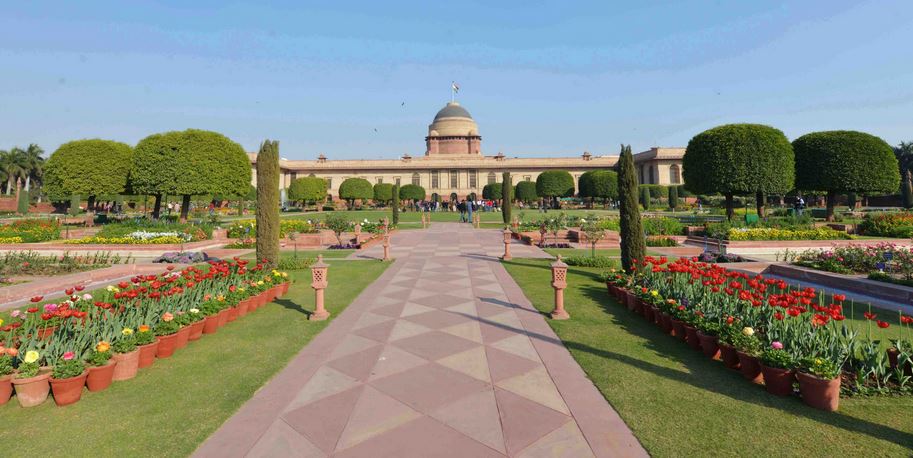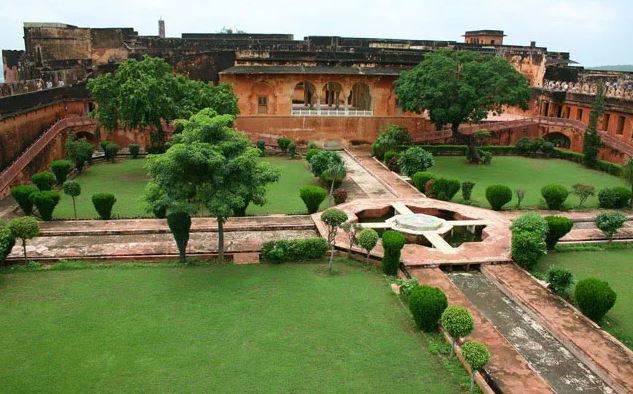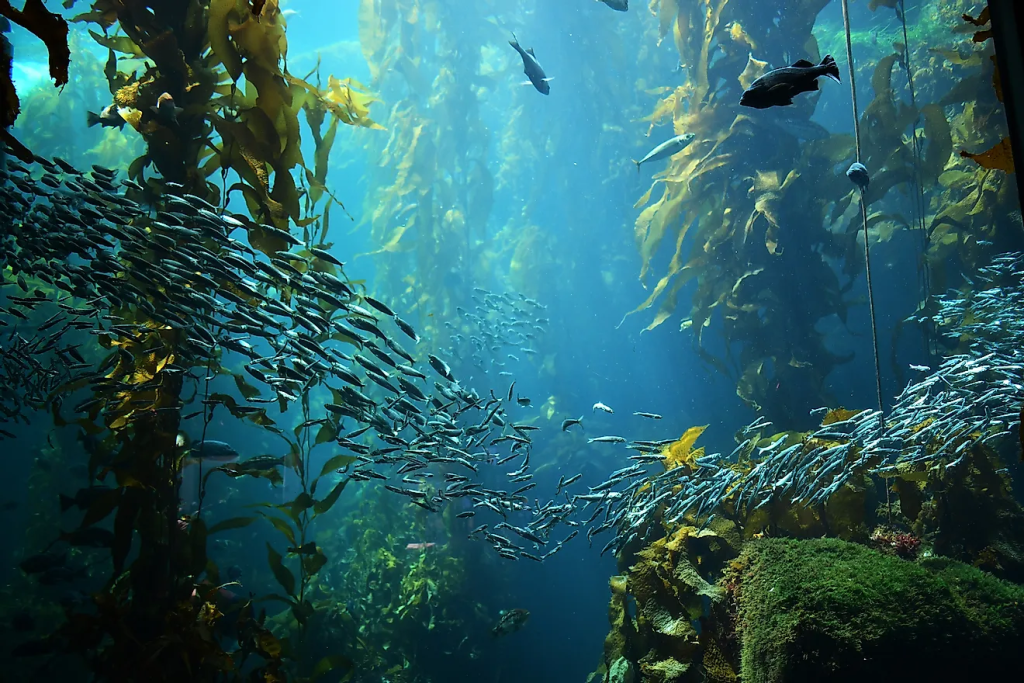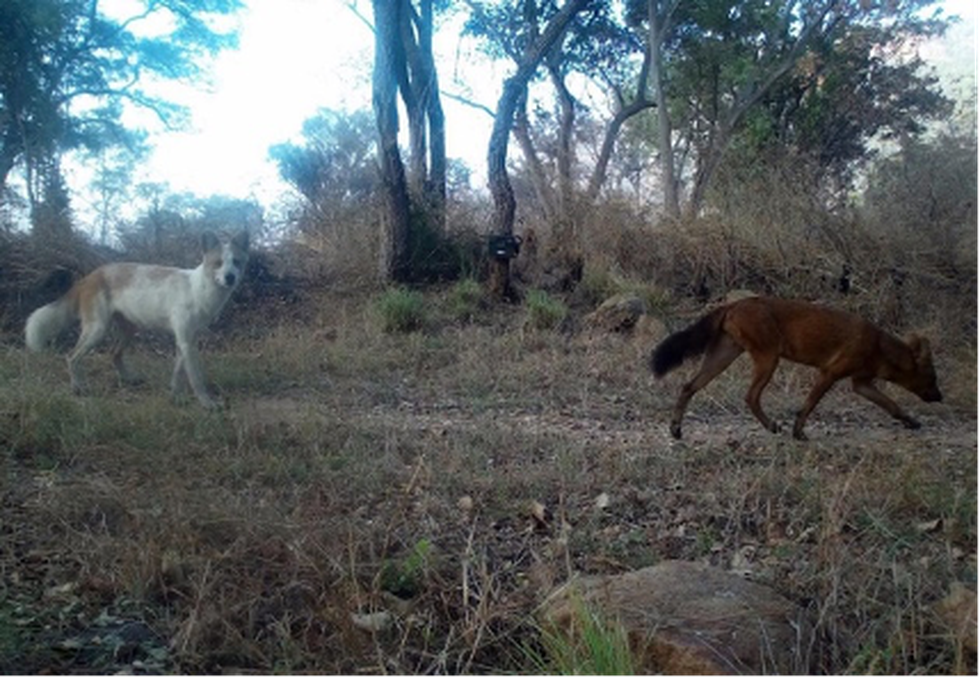CONTENT
- World Economic Situation and Prospects 2023
- Mughal Gardens will now be called as Amrit Udyan
- Kelp Forests
- Albinism
World Economic Situation and Prospects 2023
Context:
Recently, the United Nations has released a new report World Economic Situation and Prospects 2023, which stated that the Global Gross Domestic Product (GDP) is likely to drop to 1.9 % in 2023 from 3 % in 2022.
Relevance:
GS III: Indian Economy
Dimensions of the Article:
- Report Findings
- Indian Prospect
- Recommendations
Report Findings:
Inflation
- Average inflation rate was 9% worldwide in 2022, causing budget difficulties for developed and developing countries alike.
Recession
- Current economic downturn hinders recovery from Covid-19 crisis, putting several countries at risk of recession in 2023.
- Job recovery slower in most developing countries in 2022.
- Women’s employment losses during the pandemic have not fully been reversed.
Global Output
- World output growth can return to 2.7% in 2024, dependent on changes in conflict and supply chain disruptions.
Country Projections
- China expected to grow at 4.8% in 2023 and 4.5% in 2024.
- US estimated to have 0.4% economic growth in 2023 and 1.7% in 2024.
- Russian exports rose in 2022 due to increased trade with China, India, and Turkey.
South Asia Outlook
- Economic outlook has greatly worsened due to high food and energy prices, monetary tightening, and fiscal vulnerabilities.
- Average GDP growth expected to decline from 5.6% in 2022 to 4.8% in 2023.
- Bangladesh, Pakistan, and Sri Lanka face challenging economic prospects and sought assistance from IMF in 2022.
Indian Prospect:
Growth Rate
- India’s growth expected to remain strong at 5.8%, lower than the 6.4% estimated for 2022, due to higher interest rates and global slowdown impact on investment and exports.
- Food and energy subsidies prevented a major downfall in India.
- India’s growth projected at 6.7% in 2024, fastest growing among major economies.
Inflation
- Annual inflation estimated at 7.1% in 2022.
- Inflation expected to decrease to 5.5% in 2023 as global commodity prices moderate and slower currency depreciation reduces imported inflation.
Unemployment
- Unemployment rate in 2022 declined to pre-pandemic levels through increased urban and rural employment, indicating strong domestic demand.
- Youth employment still below pre-pandemic levels, especially among young women.
Recommendations:
Calibration of Macroeconomic Policies
- Balance between stimulating output and controlling inflation needed through calibrated macroeconomic policies.
- Effective coordination among central banks and clear policy messages necessary for managing and moderating inflationary expectations.
De-anchoring of Inflation Expectations
- Reform of existing frameworks to benefit, central banks also need a deliberate and comprehensive process to maintain credibility and avoid de-anchoring of inflation expectations.
Reprioritization of Public Expenditures
- Public expenditures need to be reallocated and reprioritized to support vulnerable groups through direct policy interventions.
- This requires strengthening social protection systems and providing support through targeted subsidies, cash transfers, and utility bill discounts.
Scale up SDG Financing
- Urgent need for stronger international commitment to expand emergency financial assistance and scale up SDG financing for:
- Strengthening social protection systems and providing support through targeted subsidies, cash transfers, and utility bill discounts, complemented by reductions in consumption taxes or custom duties.
Source: Down to Earth
Mughal Gardens Will Now Be Called as Amrit Udyan
Context:
The Rashtrapati Bhavan gardens — popularly known as the Mughal Gardens was renamed as Amrit Udyan.

Relevance:
GS I: Art and Culture
Dimensions of the Article:
- The Amrit Udyan: A Landscape of Mughal and English Styles
- Charbagh Style of Mughal Gardening in India
The Amrit Udyan: A Landscape of Mughal and English Styles
- Design Finalization: The designs for the Mughal Gardens were finalized by Edwin Lutyens in 1917, but planting wasn’t done until 1928-1929.
- Spread Across 15 Acres: The Amrit Udyan spans 15 acres, encompassing both Mughal and English landscaping styles.
- Charbagh Garden: The main garden is divided into a grid of squares by two channels intersecting at right angles, creating a Charbagh (four-cornered garden), a signature characteristic of Mughal landscaping.
- Lotus-Shaped Fountains: Six lotus-shaped fountains, rising to 12 feet, can be found at the intersections of the channels.
- Rich Floral Collection: The gardens are home to over 2500 varieties of Dahlias and 120 varieties of roses.
Charbagh Style of Mughal Gardening in India

- Introduction: The Mughals were renowned for their love of gardens, and the Persian Charbagh style was a favorite among them.
- Definition: Charbagh is a rectangular garden divided into four equal sections, symbolizing the perfect harmony between humans and nature.
- Spread: This style can be found in many gardens across lands ruled by the Mughals, from Humayun’s Tomb in Delhi to Nishat Bagh in Srinagar.
- Characteristics: A defining feature of these gardens is the use of waterways to separate the quadrants, along with the presence of fountains symbolizing the cycle of life.
- Legacy: These gardens, known as Mughal Gardens, continue to evoke the essence of Mughal elegance and sophistication, showcasing the beauty of their style of gardening.
Source: The Hindu, Indian Express
Kelp Forests
Context:
A recent study has revealed that Kelp forests are declining because of climate change.

Relevance:
GS III: Water Resources
Dimensions of the Article:
- Key Findings of the Study
- About Kelp Forests
Key Findings of the Study:
- Ecklonia radiata, a prevalent kelp species in the southern hemisphere, is susceptible to the effects of climate change, particularly in equatorial regions.
- The increasing temperatures are causing a decline in its populations along the eastern coast of Australia and further declines are expected globally.
- Direct protection in its natural habitat may not be feasible, but its valuable genetic diversity can be maintained through ex situ preservation in culture banks for potential future use in restoration, hybridization, or adaptation efforts.
About Kelp Forests:
- Kelp forests are underwater ecosystems created by the dense growth of multiple species of brown algae.
- Kelp is a large brown algae that lives in cool and shallow waters close to the coast.
- Kelp attaches to the ocean floor, grows to the water’s surface, and relies on sunlight to produce food and energy.
- Kelp forests are found in shallow, clear coastal waters and provide habitats for hundreds of species of invertebrates, fishes, and other algae.
Significance of Kelp Forests:
- They serve as a primary food source for marine creatures and produce up to 60% of the carbon found in coastal invertebrates.
- As a diverse invertebrate and fish ecosystem, they serve as a habitat for birds to forage.
- They increase coastal ecology productivity by releasing carbon and creating new biomass, detritus, and other materials through primary production.
Source: Down to Earth
Albinism
Context:
Recently a partial albino dhole (Cuon alpinus) has been photo-documented in Cauvery Wildlife Sanctuary.

Relevance:
GS III- Environmental Pollution & Degradation, Conservation
Dimensions of this article:
- About Albinism
- About Dholes
- About Cauvery Wildlife Sanctuary
About Albinism:
- Albinism is the result of cells that can’t produce melanin, the pigment needed to colour skin, scales, eyes and hair.
- This genetic condition gets passed to offspring when both parents carry the recessive gene. When albinism is present, the animal can appear white or pink.
- The production of melanin occurs within melanocytes, specialized cells that are present but not fully functional in albino mammals.
About Dholes
- It is a wild carnivorous animal and is a member of the family Canidae and the class Mammalia.
- They are also known as Asian wild dogs.
- Historically, dholes purportedly occurred throughout southern Russia, all across central Asia, south Asia and southeast Asia.
- According to recent research and current distribution maps, they are restricted to south and southeast Asia, with the northernmost populations in China.
- In India, they are found in three clusters across India namely the Western and Eastern Ghats, central Indian landscape and North East India.
- Karnataka, Maharashtra and Madhya Pradesh rank high in the conservation of the endangered dhole in India, according to a study (2020).
- Dholes play an important role as apex predators in forest ecosystems.
Conservation Status
- IUCN List of Threatened Species: Endangered
- Convention on International Trade in Endangered Species of Wild Fauna and Flora (CITES): Appendix II
- Wildlife Protection Act, 1972 : Schedule II
About Cauvery Wildlife Sanctuary
- It is extended over three districts, namely, Chamarajanagar, Mandya and Ramanagara in
- The sanctuary provides a vital link between Bannerghatta National Park in the north and BRT Tiger Reserve and Male Mahadev Hills Wildlife Sanctuary in the south.
- The area is drained by three rivers, namely, Cauvery, Arkavathi and Shimsha.
- Flora: The forest is primarily of dry deciduous and scrub types, but a wide range of forest types including moist deciduous, semi-evergreen, evergreen, shola, riverine, Hardwicke forest, etc.
- Fauna: Important animals found in the sanctuary are tigers, elephants, leopards, bison, wild dog etc.
Source: The Hindu




